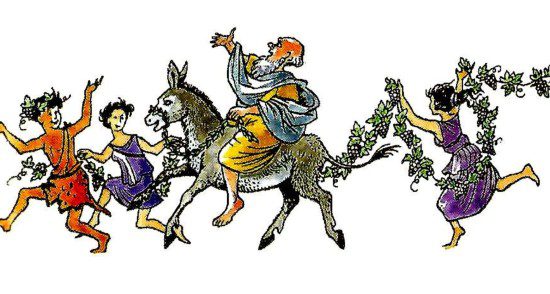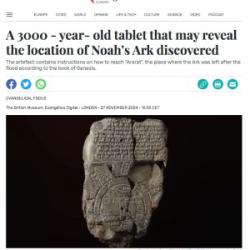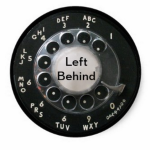Here’s the saddest and unintentionally funniest bit from Rebecca Ritzel’s report “An evangelical theater troupe is gaining traction in Washington“:
Nicole Stratton defends the policy on sexuality as necessary. “Nowadays, you just have to put that out there from the beginning as where your direction is going.” A friend of hers from high school who “came to the Lord out of the gay lifestyle” has played Trumpkin the Dwarf in “Prince Caspian,” she said.

We need to unpack why that’s darkly comical, and why it’s even funnier in the context of this same all-straight white Christian theater group is also touring with a production of John Bunyan’s Pilgrim’s Progress.
Since the early 1970s, Stratton’s family has been nurturing evangelical Christian talent from its home base in Taylors, South Carolina. What began with her father, Nicky Chavers, packing the family and their sets into a van and putting on shows for churches and home-school groups has evolved into a performing arts conservatory, a 300-seat theater and a twice-annual residency at the Museum of the Bible just south of the National Mall, where “Pilgrim’s Progress” wrapped up a six-week run in October.
The museum has booked Logos for two more shows in 2025, including a yet-to-be-named adaptation of a C.S. Lewis novel. As Washington prepares for the return of President-elect Donald Trump, the museum says its successful partnership with Logos demonstrates that there is a growing audience in the nation’s capital for Christian, and decidedly culturally conservative, entertainment. For Logos, that commitment extends beyond subject matter: The company requires its artists to affirm a 14-point doctrinal statement, including a policy that prohibits those who identify as LGBTQ.
One thing that shines through in this piece is that Stratton and her family have the bug. They’re hooked. Being “theater people” in their specific politico-religious subculture may not express itself in the same way that it does everywhere else, but it’s clear that these are people who love to get on stage and tell stories for an audience and the exhilaration that sometimes comes from that shared experience.
They remind me of Eugene Levy’s sweet, kind portrayal of a dentist-turned-amateur thespian in Waiting for Guffman — not in terms of that character’s limited talents, but just in terms of the enthusiastic epiphany he has and his weirdly admirable willingness to turn his whole life upside down in order to pursue this thing that makes him feel so much more alive. (Call it the Dr. Allan Pearl of Great Price — the kingdom is like unto this.)
These folks also seem to have a bit in common with the Fred Willard and Catherine O’Hara characters in that movie — sometimes coming across as somewhat star-struck by themselves. Some people fall in love with the stage, some with the spotlight. Some with both.
In any case, the universe of acceptable fare for a theater troupe like this is quite limited. For all the “Classical Western Culture” airs put on by the white Christian home-schooling world, most of that heritage is frighteningly unacceptable for these folks. Shakespeare is out of bounds. We briefly had someone from that world on the crew of a production of Hamlet I was in.* They flounced off after the first rehearsal for the “country matters” scene, indignantly refusing to be associated with such filth. Very, very few of the “classics” don’t involve something that would be an objectionable deal-breaker for the “world-view” of a troupe like this or, even more so, for most of their audience.
This is especially true for a troupe that began and grew by performing in churches. That brings an expectation of more explicitly religious material. Their repertoire can’t merely be wholesome or unobjectionable, it also has to be edifying — a theatrical production that can stand in for a sermon.
Bunyan’s allegory is ideal for that. Plus, it’s already a favorite in the white conservative home-school world because not only is it religious and devotional, it’s easy to teach. Bunyan isn’t a subtle or difficult-to-interpret writer. No interpretation or deciphering is really necessary for a book in which nearly every character or place is labeled.
This is also why these conservative white Christians love The Lion, the Witch, and the Wardrobe — the first book in Lewis’ Narnia series. The centerpiece of that book is also transparently allegorical, offering an exposition on substitutionary atonement. The obviousness and ease of understanding Aslan as a representative of Jesus Christ is so clear that the rest of the Narnia books earn the white Christian imprimatur as well, even when their allegorical lessons are less clear.
Which brings us back to the tragic irony of that paragraph we quoted up top:
Logos … doesn’t allow LGBTQ performers. Line 12 of the company’s “belief statement” reads, in part: “We believe that any form of sexual immorality, such as adultery, fornication, homosexuality, bisexual conduct, bestiality, incest, pornography or any attempt to change one’s sex, or disagreement with one’s biological sex, is sinful and offensive to God.”
Nicole Stratton defends the policy on sexuality as necessary. “Nowadays, you just have to put that out there from the beginning as where your direction is going.” A friend of hers from high school who “came to the Lord out of the gay lifestyle” has played Trumpkin the Dwarf in “Prince Caspian,” she said.
If you’ve never read Prince Caspian, or if it’s just been a while, let me explain. The book is as straightforward and unambiguous an allegory as Pilgrim’s Progress. The villains of the story, the wicked, interloping “Telmarines” conquer Narnia, outlawing all of its wild, magical creatures and talking beasts and forcing them underground. But then Aslan returns and sets all the wild things free and they reclaim the land from those rotten Telmarines.
It is, in other words, a book about the white American Christians who wanted to take away Lewis’ beer.***
More generally, it’s a tract against legalism and puritanism and joyless asceticism. The climax of Aslan’s victory in the book has his friend and ally, Bacchus, causing grapevines to shoot up everywhere, tearing down the oppressive structures of the Telmarines’ empire, and Lewis seems most passionate when discussing how the end of their rule would allow wine and ale to flow freely once again. But that particular form of legalism is a stand-in for every other expression of it. The Telmarines weren’t simply teetotalers. They had restricted and restrained and repressed the free creatures of “Old Narnia,” choking off their vitality and denying their validity. This is what makes them the villains of the story — the Bad Guys.
The Telmarines were, in other words, just exactly the sort of people who would allow live theater, but only under very strict conditions, such as if the works performed were deemed safely orthodox and if all of the LGBT actors and artists involved were forced to pretend that they were “ex-gays.”
Once I was old enough to understand what I was reading in Prince Caspian, I was confused as to why all the grown-ups at my white fundamentalist church had encouraged me to read it. I was surprised that they had even allowed me to read it.
I supposed it was some kind of Old Narnian magic. There’s some enchantment on that story that keeps the Telmarines themselves from ever comprehending what the story very obviously means.
* I played the ghost, the gravedigger’s assistant, and Fortinbras.
To be clear, I played the unspeaking ghost, wordlessly haunting Marcellus and Barnardo. The actual ghost was played by a terrific actor named George Mulford. We wore identical costumes — armed at point exactly, cap-à-pie — with hoods pulled down low over our faces. I entered stage left, and with courteous action waved Hamlet and his friends to a more removéd ground. As they approached, I ducked into the wings stage left and George immediately entered from stage right, pulled back his hood, and spoke.
Two guys in the same costume is not an elaborately sophisticated bit of trickery, but audiences loved the effect and seemed genuinely amazed at how the ghost was able to disappear and reappear so quickly. After every show, people would ask George how he managed to get from one place to another almost instantaneously. He always just smiled and asked, “How do you think I did it?” Then, whatever they came up with, he’d say, “Yep, you got it. That’s what we did.” And they would head home convinced that there was some kind of elaborate trap-door and pulley system underneath the stage.
** I did scenes from The Normal Heart and Angels in America in a church sanctuary as part of an AIDS benefit in the early ’90s. But that was a UU church, which probably doesn’t count. Nor does a place like Germantown Mennonite, where I once saw a terrific, hilarious production of Lysistrata, complete with enormous prosthetics. Those strap-ons are absolutely part of the Canon of Classical Western Literature, but they probably aren’t included in the “classic education” of the white Christian home-schoolers being forced to read Bunyan unabridged.
*** It can also be read, somewhat, as a critique of the British Empire. And, like almost everything Lewis wrote, it works as an allegory about the evils of British boarding schools. But, yes, really, truly it’s very much and very explicitly about Lewis telling American fundamentalists to back off and leave his beer alone.













